The Invisible Man
Minus the macabre resolve of a dead soldier's leg standing alone inside the gentle rain of vaporized meat, the death of my great-uncle was made beautiful to me by relatives who decided, like so many others prone to the questionable practice of ventriloquizing the deceased, that heroism works best when the person chosen to be the hero no longer exists.My great-uncle's death was made beautiful to me by relatives who decided, like so many others prone to ventriloquizing the deceased, that heroism works best when the hero no longer exists.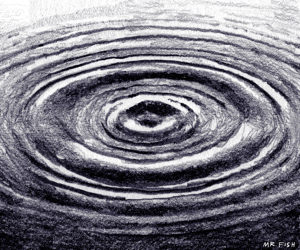
There’s a story that I grew up hearing over and over again about my great-uncle Eddie being blown to smithereens in Tunisia during World War II. In one version, it was a land mine that did it, and in another it was a mortar round from a German Leichter Granatwerfer 36. The single most important detail that had everybody retelling the story, the one that everybody could agree on, was the one about how Eddie’s left leg, from just below the kneecap down, was still standing upright when the smoke cleared after the explosion. In fact, it was all that was left of him.
“Those krauts couldn’t even knock him down, boy!” hacked an old lunatic named Izzy (whom my mother designated as her first asshole twice removed on her mother’s side) at a family barbecue over Memorial Day weekend in 1973, his breath smelling like it had been inhaled from the soggy bunghole of a pickle barrel and exhaled through a cat. “No, sirree!” he slurred, steadying himself with his big hammy hand heavy on my 7-year-old shoulder. “That great-uncle of yours had balls! That leg of his should be in the goddamn Smithsonian!”
It was a difficult image to erase from my mind and one that I was seldom without during moments of quiet, most usually when I was trying to fall asleep at night. After all, here was this relative of mine who was flesh and blood, my flesh and blood — flesh and blood that was made no more or less invincible by the American flag stitched like a talisman onto its uniform, an M-1 Garand semiauto rifle slung at its side as if it were a megaphone for God Almighty, a green mixing bowl strapped to its fresh crew cut as if it were an admission that neither a talisman nor a God were reliable protections against the treachery of men engaged in warfare — and all of a sudden there was a gruesome flash of light and an earsplitting crack in the atmosphere. The relative was instantly gone, except for his leg, this abandoned limb waiting for instructions from a brainstem that had been atomized. It seemed a horrible encroachment of cartoon buffoonery into real life and made me wonder whether Chuck Jones might not be a more reliable authority on universal design than any monk, mullah or king.
Th-th-th-that’s all folks!!
Eddie’s military portrait, which looked like a Hollywood publicity still from MGM, was hung in the municipal building at town hall, in the east corridor that led to the council chambers. It was right next to the most popular water fountain on the first floor and had much better lighting than did the portrait of John F. Kennedy facing from the opposite wall. I remember glancing over at the Kennedy portrait, which was a crappy oil painting, and imagining that it had been rendered by somebody using a box of Q-tips and whose elbow was constantly being nudged by a llama starved for attention. My grandmother would sometimes take my brother, sister and me out for Slurpees at the local 7-Eleven and then walk us over to where we could cool ourselves in the air conditioning and stare at my great-uncle’s picture and envision that the whole world was basking in the exquisite mellifluousness of our loss.
We were standing outside the elephant enclosure at the Philadelphia Zoo when I first noticed my grandfather’s peculiar habit of grinding his cigarette butts into pulverized tobacco crumbs. Of course, he’d been doing it for years, but when you’re 7 years old you suddenly start seeing things that, though they may have been happening all along, appear brand new because they coincide with burgeoning cognitive abilities that you never had before. It had also recently occurred to me that not everybody had a grandmother who, armed with only her pocketbook and a housedress stuffed with used balls of Kleenex and half-rolls of wintergreen Life Savers, was able to steal whole mannequins, piece by piece, from department stores and fill her backyard pool with the faux carnage because she thought it would be fun for the kids.
“It was just something we did during the war so the Germans wouldn’t know we were ever there,” said my grandfather, rubbing my back as we walked past the vulture cage. I could tell that he didn’t want to talk about it. It was his habit, whenever my brother and sister and I asked him to talk about anything from World War II, to say that there wasn’t anything to say about it, except that it was sad and a really horrible experience. Then he would light up a Lucky Strike. Then he would smoke it down to practically nothing and smash the butt. It always amazed us to see just how little evidence he left behind whenever we walked away from those unanswered questions.
The only other photograph that I ever saw of my great-uncle, besides the one hanging in the municipal building, was one that had escaped a house fire at the address where my great-grandmother lived for 40 years. It was a picture of Eddie posing with a fish at the edge of a lake in Lenape, Pa., in 1935 when he was 15 years old and as cocksure as a new pear. In the photo he is shirtless and has a cigarette sticking out of his mouth, as does the fish he is holding with his two fingers hooked beneath its gills. His swimming trunks are oversized to the point of being clownish and his eyes, as intense as tiny cinders, are pinched into a fiendish squint by the bright sunlight and a ludicrous grin. His black hair falls jagged over his sweaty forehead as if it were the disembodied hand of a shaggy monster preparing to uncap his skull, and his bare feet are caked with mud. Nothing in his smile registers the agonizing telepathy from those of us in his future warning him against the inevitable.
I was recently asked by one of my 8-year-old twin daughters over breakfast what my grandfather was like and I found myself at a complete loss for words. Every attempt at a description failed. In many ways he was like the sun to me — impossible to look at directly, yet absolutely essential when it came to illuminating the hodgepodgery that was the rest of my family. I started to wonder whether maybe my relationship with him was so impossible to describe, not because it was amorphous or extraneous, but rather because it was never out of my sight and, therefore, completely invisible to me. Trying to reinvent the constant that was my grandfather as an anomaly was like trying to jazz up a glass of water just to make it less boring to somebody who might be uninspired by the fact that the most useful and life-sustaining compound that exists on earth is clear and tasteless.
I was probably 8 years old when my grandmother told me how Eddie’s leg, still wearing the combat boot, was sent back to her mother and buried in her vegetable garden by a local Boy Scout troop, while a 400-pound neighbor named Bunny Tinkle played Yankee Doodle on the rims of wineglasses filled with water and relatives cried and the children of relatives tried to keep a straight face and raccoons, already in face masks, waited for nightfall.
“The thing was eventually yanked out of the ground by some animal,” my grandmother said, “and disappeared. Of course, my mother tried to comfort everybody by insisting that that’s the way Eddie would’ve wanted it. ‘He was always wandering off in the middle of the night,’ she would tell them. ‘I wouldn’t be surprised if that leg was walking the boardwalk in Atlantic City or hitchhiking across the country — Eddie always wanted to see the Hoover Dam.’ ” My grandmother would then try to imitate her mother’s excruciatingly forced smile, doing her best to make it look like something wet and clammy that she’d picked up off the ground and laid across her face, while I did my damnedest to figure out how a foot might go about thumbing a ride from a trucker out on the interstate. I would then try to imagine the uncomfortable silence inside the cab once the leg was picked up, the glow from the dashboard lights bathing my great-uncle’s remains and making them appear as ghoulish and vague as an aberration. I imagined the sound of a single fly buzzing around the gaping and ragged sore that capped Eddie’s stump and the tightening of the driver’s jaw as he groped around for conversation that would both fill the excruciating silence and wouldn’t disparage his passenger’s most obvious handicap.
Minus the macabre resolve of a dead soldier’s leg standing alone inside the gentle rain of vaporized meat, the death of my great-uncle was made beautiful to me by relatives who decided, like so many others prone to the questionable practice of ventriloquizing the deceased, that heroism works best when the person chosen to be the hero no longer exists and, therefore, cannot contradict his gallantry by continuing to demonstrate the circumstantial mediocrity and poetic fallibility that comes with being alive.
When my grandfather died in 1995, a fountain featuring a statue of a golfer standing beneath an umbrella with his chin in his hand was erected in his vegetable garden by relatives who didn’t seem to care that he had never picked up a club. After the pleasant ping-pong of jokes and jabs exchanged between brothers and sisters who hadn’t seen one another in a while, his ashes were sprinkled into the soil around his tomato plants and disappeared as soon as they hit the ground.
When Eddie’s picture was moved in 2008 from the municipal building at town hall to the lobby of the firehouse and put into a long glass case with other veterans who had been blown to smithereens in more recent wars, I went to go see it. What surprised me about seeing the photograph for the first time in 35 years wasn’t how much smaller it was than I remembered, but rather the extended family that my great-uncle was now fraternizing with, all of them orbiting a giant-sized framed photo of George W. Bush standing at Ground Zero with a megaphone. I thought about how peculiar it was that all the soldiers were smiling, particularly when there was so much more room in the lobby for the construction of more and more glass cases.
Walking around and looking at the crowd of fallen heroes before me, I started to cry. Not because I was overcome suddenly by the tragedy of their meaningless passing, but rather because I couldn’t stop thinking about the sad golfer, who was not my grandfather, standing all alone not 10 miles away in a basin of clear rainwater for anybody who cared to notice.
Your support matters…Independent journalism is under threat and overshadowed by heavily funded mainstream media.
You can help level the playing field. Become a member.
Your tax-deductible contribution keeps us digging beneath the headlines to give you thought-provoking, investigative reporting and analysis that unearths what's really happening- without compromise.
Give today to support our courageous, independent journalists.


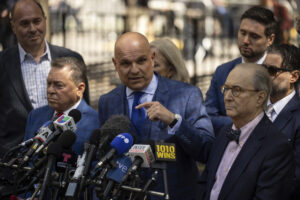
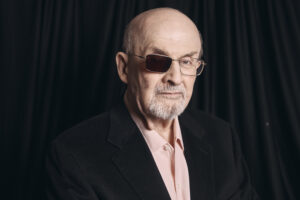
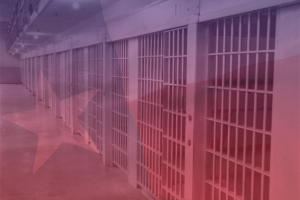
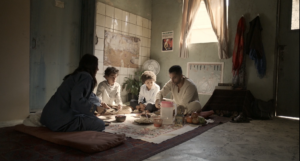
You need to be a supporter to comment.
There are currently no responses to this article.
Be the first to respond.